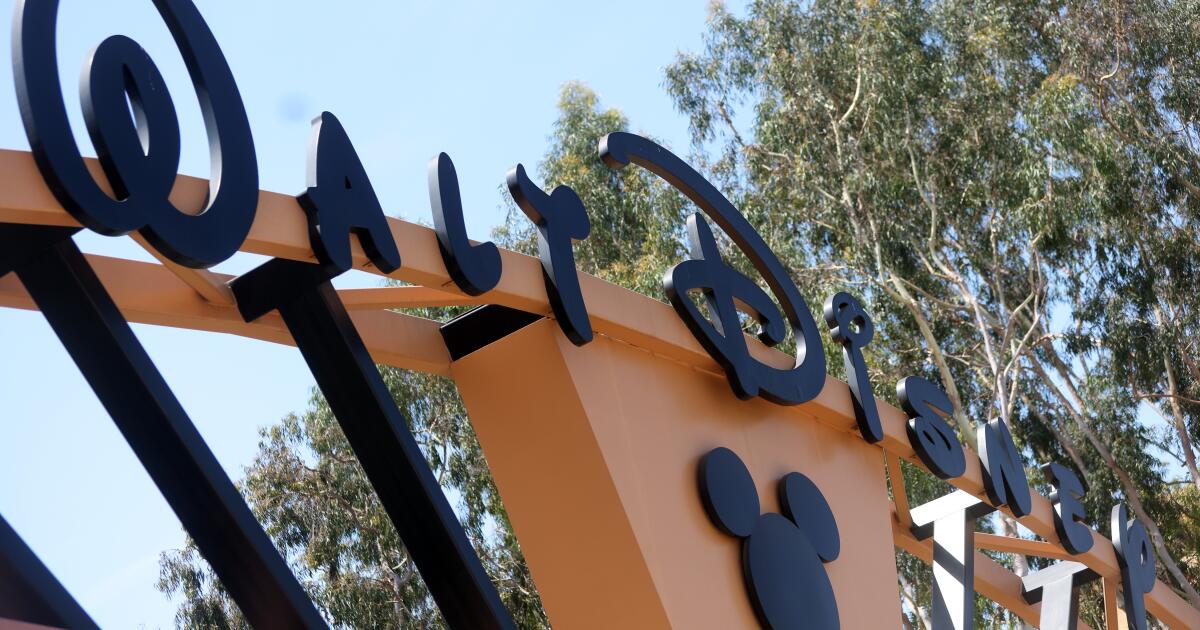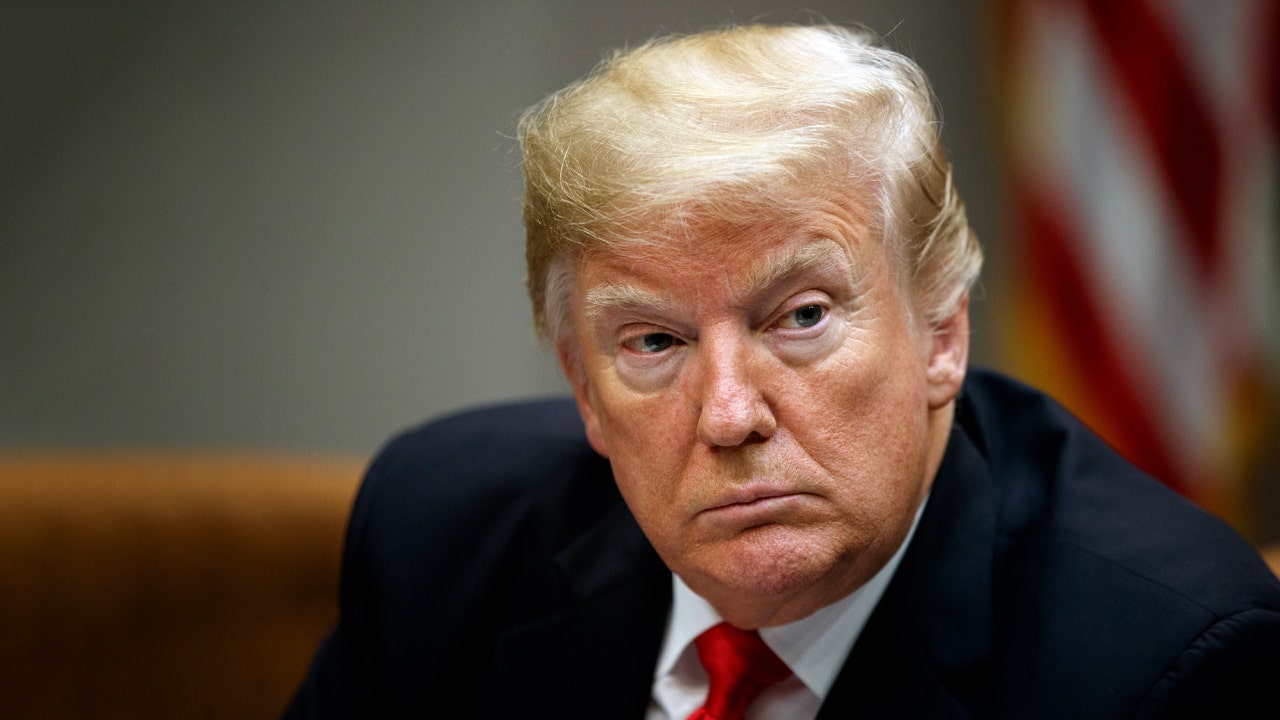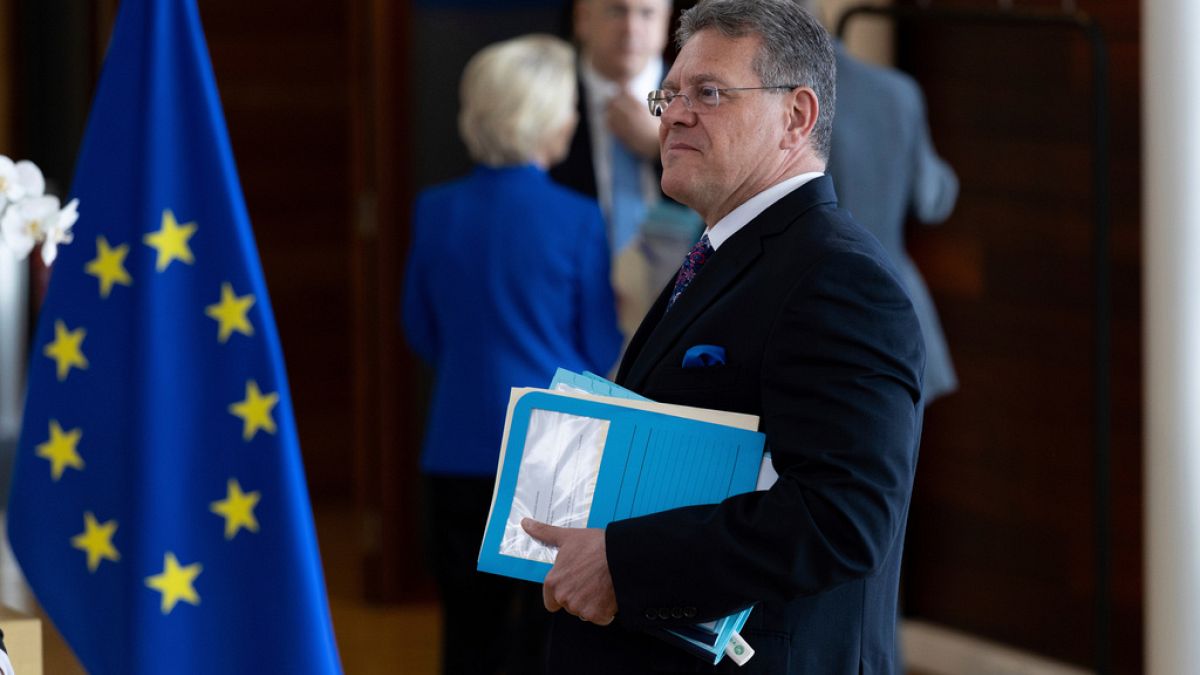Business
Hawaiian Electric Was Warned of Its System’s Fragility Before Wildfire

Hawaiian Electric has known for years that extreme weather was becoming a bigger danger, but the company did little to strengthen its equipment and failed to adopt emergency plans used elsewhere, like being prepared to cut off power to prevent fires.
Before the wildfire on Maui erupted on Aug. 8, killing more than 100 people, many parts of Hawaiian Electric’s operations were showing signs of stress — and state lawmakers, consumer groups and county officials were saying that the company needed to make big changes.
In 2019, Hawaiian Electric itself started citing the risk of fires. The company said that year that it was studying how utilities in California were dealing with similar threats.
Two years later, in a report about Hurricane Lane in 2018, the Maui County government warned of the potential that “aboveground power lines that fail, short or are low-hanging can cause fire ignition (sparks) that could start a wildfire, particularly in windy or stormy conditions.”
But it wasn’t until last year that the company asked state regulators to authorize it to spend $190 million to strengthen power poles and other equipment — a request that is still pending. Even when it is approved, the work will take several years to complete.
Attention turned to the company after the emergence of a video recorded on Aug. 8 that appeared to show a power line in Lahaina throwing off sparks and igniting dry grass just hours before the fire devastated the city. In addition, data from sensors owned by a company called Whisker Labs appear to show major faults with the company’s systems just as the wind picked up.
“This is not a highly reinforced system,” Robert McCullough, of McCullough Research, an energy consulting firm in Portland, Ore., said about Hawaiian Electric’s system. “It has not been hardened.”
Utility executives and regulators across the United States have been stunned by the ferocity and frequency of weather-related disasters in recent years, including several major wildfires in California and the 2021 winter storm in Texas that left much of the state without light or heat for days.
But energy experts say these calamities and their effect on electric grids should not have been surprising. In many places, utilities have neglected to sufficiently maintain and improve electric grids for decades, and regulators and lawmakers have largely looked the other way.
“The problem with the electric utilities in the United States is they act like the protected monopolies in the face of catastrophic risk,” said Michael Wara, a scholar focused on climate and energy policy at Stanford University who thinks Hawaiian Electric could have done a lot more to prevent its equipment from becoming a potential cause of fires. “But nature doesn’t care that they’re a protected monopoly. You need to act like a regular company facing a major risk.”
The industry has known for years that electrical equipment can set off fires when high winds cause poles and power lines to break and collide with dry vegetation. Power lines can also set off fires if they become overloaded because utilities haven’t upgraded them or put in place other safeguards.
“Substantial investments in adaptation, hardening and resilience are being made to help mitigate risk,” said Scott Aaronson, senior vice president of security and preparedness at the Edison Electric Institute, a utility industry trade organization.
Electric utilities in California have had to pay billions of dollars to fire victims in recent years. Hawaiian Electric might have to make big payouts, too. At least four lawsuits have been filed on behalf of Maui residents, and the company’s shares and bond prices have plunged.
In a securities filing on Friday, Hawaiian Electric said that it was consulting with advisers as it seeks “to endure as a financially strong utility that Maui and this state need.”
Officials from the U.S. Bureau of Alcohol, Tobacco, Firearms and Explosives, including an electrical engineer, are helping the Maui fire department determine the cause of the fire. The bureau is the primary federal agency that investigates fires and arson.
Hawaiian Electric is a unique utility. Because the state is made up of many islands spread over 1,500 miles, the company operates many electric grids and imports fuel to run power plants. As a result, the state has the highest electricity rates in the country. That makes it much harder for the company and the state to invest in expensive grid upgrades.
“There’s always been a push and pull on how to pay for it,” State Senator Gilbert S.C. Keith-Agaran said, referring to plans to improve the electric grid. “The utility doesn’t want to pay for it unless they can pass on the cost to the ratepayers.”
The $190 million proposal Hawaiian Electric made to improve its grid would, among other things, have replaced aging power poles with new ones, including 80 in Maui. Energy experts said many of the company’s poles were probably not strong enough to withstand winds that hit Lahaina.
Some of the company’s poles are surrounded by invasive grasses that can become explosive tinder in the dry season. Experts have long warned that too little was being done to check the spread and growth of the grasses.
“A lot of our concerns were that this infrastructure is way past due,” Jennifer Potter, a former member of the Hawaii Public Utilities Commission who lives on Maui, said, pointing in particular to the poles. “Many that have been compromised have been compromised for years.”
Ms. Potter left the commission in November after four years there.
The commission did not respond to a request for comment.
Hawaiian Electric said it had spent $111 million on vegetation management and $287 million on equipment replacement, strengthening the grid, inspections and using technology like drones and laser imagery to monitor and control the grid since 2018.
“We’re going to look at every decision we made, every tactic we employed to act on the wildfire threat on Maui,” said Jim Kelly, a spokesman for the utility. “Outside voices speak confidently about what happened and what we did or didn’t do, but the facts are that we took the threat seriously and were confronted by an extraordinary climatological event on Aug. 8.”
But some experts say Hawaiian Electric should have done more.
Mr. Wara said that Hawaiian Electric could have established a power shut-off program in consultation with local authorities and emergency services. In California, after warning residents and local officials, utilities shut off power when high winds approach to reduce the chance that power lines will ignite fires.
Henry Curtis, executive director of Life of the Land, a Hawaii nonprofit group that represents consumers before the state Public Utilities Commission, said he “strongly supports” power shut-off programs. The utility, he said, has been dismissive of the idea.
“We’ve been raising climate change for more than two decades, and the utility has been really slow in dealing with it,” Mr. Curtis said. “Certainly Hawaiian Electric knew that Lahaina was the most vulnerable place. They’ve known that for years.”
Shelee Kimura, Hawaiian Electric’s chief executive, said after the fire that the company had not shut off power in Lahaina because electricity was needed to keep water pumps and medical devices running.
“In Lahaina, the electricity powers the pumps that provide the water — and so that was also a critical need during that time,” Ms. Kimura said at a news conference on Monday. “There are choices that need to be made — and all of those factors play into it.”
Many residents in California have complained about utility power shut-off programs. Utilities there have come up with ways to address some of the concerns raised by residents and Ms. Kimura. San Diego Gas & Electric opens shelters that have electricity for residents facing a power shut-off. The utility also provides backup generators to power water pumps and other critical equipment.
Lawmakers in Hawaii, seeing the growing threat of extreme weather linked to climate change, also pursued measures to bolster the grid. Having seen the vulnerabilities of Puerto Rico in Hurricane Maria in 2017, Lorraine R. Inouye, a state senator, introduced a bill in 2018 aimed at strengthening electrical equipment to better withstand natural disasters. The bill did not advance.
“If it went into effect, today we would have been in a better position,” she said.

Business
Disney to cut hundreds of employees in latest round of layoffs

Walt Disney Co. launched another deep round of layoffs on Monday, notifying several hundred Disney employees in the U.S. and abroad that their jobs were being eliminated amid an increasingly difficult economic environment for traditional television.
People close to the Burbank entertainment giant confirmed the cuts, which are hitting film and television marketing teams, television publicity, casting and development as well as corporate financial operations.
The move comes just three months after the company axed 200 workers, including at ABC News in New York and Disney-owned entertainment networks. At the time, the division said it was trimming its staff by 6% amid shrinking TV ratings and revenue.
Disney declined to specify how many workers were losing their jobs. The cutbacks — the fourth round of layoffs in less than a year — come after Disney Chief Executive Bob Iger acknowledged to Wall Street that Disney had been pumping out too many shows and movies to compete against Netflix.
The programming buildup accelerated as the company prepared to launch Disney+ in late 2019, and it bulked up its staff to handle the more robust pipeline.
But the company has since retrenched, recognizing the need to focus on creating high-quality originals that meet Disney’s once lofty standards.
Disney has faced significant budget pressures after promising investors that its direct-to-consumer services — Disney+, Hulu and ESPN+ — would achieve profitability last year. The company lost billions of dollars over several years in its strategic shift to streaming, but it reached its goal to make money on streaming last fall.
Still, streaming subscribers can be fickle, creating a daunting new reality for the company that could long count on cable TV subscriptions as one of its most reliable economic pillars. Cord-cutting has taken a heavy toll.
The entertainment giant — one of Southern California’s largest private sector employers — has eliminated more than 7,000 jobs since 2023.
The traditional TV and film units felt the brunt of the downsizing during the last year. In July, the company slashed about 140 workers, primarily in its Disney entertainment unit. The company’s TV stations also lost staff members and ABC News shed about 40 employees last October.
ABC News largely escaped this week’s cuts, according to one knowledgeable person who was not authorized to discuss the internal moves.
ABC News still boasts healthy audiences for its newscasts, but the ABC television network and Disney-owned entertainment channels have seen dramatic viewer defections as consumers switch to streaming services, including Netflix, Paramount+ and Disney+.
ABC’s prime-time schedule has lost considerable steam. For the just-ended broadcast television season, ABC mustered only three shows in Nielsen’s top 20 rankings. “Monday Night Football on ABC” ranked seventh by averaging more than 10 million viewers, “Saturday Night Football” ranked 18th with 7.4 million viewers and freshman drama “High Potential” made the cut at 20th with an average audience of 7.1 million, according to Nielsen.
Monday’s eliminations come three weeks after Disney presented its fall lineup to advertisers, leaning heavily on its sports stars including Peyton and Eli Manning rather than actors from its entertainment programming.
ESPN was spared the ax as the sports unit is preparing for its high-stakes launch this fall of a stand-alone ESPN streaming service, the knowledgeable person said.
The move comes amid a strong run for Disney’s film studio, which has celebrated blockbuster box office results from its live-action “Lilo & Stitch,” which has earned $610 million in ticket sales globally, according to Box Office Mojo.
A month ago, Disney issued strong fiscal second-quarter earnings. The company reported $23.6 billion in revenue for the three months that ended March 29, a 7% increase compared with the same quarter a year earlier. Earnings before taxes totaled $3.1 billion, up $2.4 billion from last year.
Hollywood trade site Deadline first reported the news of the latest Disney cuts.
The landscape has been increasingly challenging for traditional companies. In addition to Disney, Warner Bros. Discovery, Paramount Global and even such tech companies as Amazon and Apple have fired workers.
In late May, NBCUniversal cut 54 jobs in Los Angeles, according to state employment records. Six Flags Entertainment Corp. laid off 140 workers.
Disney shares closed down 9 cents to $112.95.
Business
The Imports the U.S. Relies On Most From 140 Nations, From Albania to Zimbabwe

President Trump’s on-and-off tariffs have created deep uncertainty about the cost of imported goods — and it’s not always clear what goods will be most affected with any given country.
The largest U.S. imports from many countries are oil and gas, electronics, cars and pharmaceuticals. But there’s another way to look at what Americans import: trying to measure a country’s distinct contribution to the U.S.’s total needs.
For example, China’s largest exports to the U.S. — by dollar value — are electronics. But the U.S. also imports large quantities of electronics from elsewhere. Nearly 100 percent of imported baby carriages, however, come from China.
Switzerland, meanwhile, is responsible for nearly all of America’s imported precious metal watches. Ethiopia, on the other hand, sends the U.S. around 2 percent of its imported knit babies’ clothes — but that’s a larger share than for any other item it exports to the U.S.
The table below shows the item the U.S. relies on most from each of 140 trading partners. (We took out items that the U.S. also exports in large quantities, such as petroleum.)
What the U.S. is most reliant on from each country
| COUNTRY | ITEM | Pct. of U.S. imports from here |
|
|---|---|---|---|
| Canada | Live pigs | >99% | |
| Peru | Calcium phosphates | >99% | |
| South Africa | Chromium ore | 98% | |
| Switzerland | Precious metal watches | 98% | |
| China | Baby carriages | 97% | |
| Mexico | Self-propelled rail transport | 94% | |
| Portugal | Natural cork articles | 93% | |
| India | Synthetic reconstructed jewelry stones | 89% | |
| Italy | Vermouth | 86% | |
| Indonesia | Palm oil | 85% | |
| Madagascar | Vanilla | 80% | |
| Turkey | Retail artificial filament yarn | 79% | |
| Brazil | Semi-finished iron | 76% | |
| Vietnam | Coconuts, brazil nuts, and cashews | 75% | |
| Australia | Sheep and goat meat | 74% | |
| New Zealand | Misc. animal fats | 73% | |
| Gabon | Manganese ore | 71% | |
| Chile | Refined copper | 71% | |
| Netherlands | Bulbs and roots | 70% | |
| Spain | Olive oil | 62% | |
| Taiwan | Tapioca | 62% | |
| Argentina | Groundnut oil | 60% | |
| Colombia | Cut flowers | 60% | |
| Bolivia | Tungsten ore | 59% | |
| Dominican Republic | Rolled tobacco | 59% | |
| Cote d’Ivoire | Cocoa paste | 59% | |
| Germany | Felt machinery | 58% | |
| Finland | Cobalt oxides and hydroxides | 56% | |
| Japan | Pianos | 52% | |
| Israel | Phosphatic fertilizers | 50% | |
| Philippines | Coconut oil | 50% | |
| France | Insect resins | 50% | |
| Thailand | Sugar preserved foods | 47% | |
| Malaysia | Rubber apparel | 46% | |
| Ireland | Sulfonamides | 45% | |
| Pakistan | Light mixed woven cotton | 43% | |
| Singapore | Glass with edge workings | 39% | |
| Guatemala | Bananas | 38% | |
| Ecuador | Cocoa beans | 38% | |
| South Korea | Rubber inner tubes | 33% | |
| Jamaica | Aluminum ore | 33% | |
| Bangladesh | Non-knit babies’ garments | 31% | |
| Austria | Handguns | 29% | |
| United Kingdom | Antiques | 28% | |
| Cambodia | Gum coated textile fabric | 25% | |
| Nicaragua | Rolled tobacco | 24% | |
| Guyana | Aluminum ore | 24% | |
| Ukraine | Seed oils | 24% | |
| Belgium | Flax woven fabric | 22% | |
| Bahrain | Stranded aluminum wire | 22% | |
| Sri Lanka | Coconut and other vegetable fibers | 21% | |
| Morocco | Barium sulphate | 20% | |
| Romania | Steel ingots | 19% | |
| Norway | Carbides | 19% | |
| Sweden | Stainless steel ingots | 17% | |
| Costa Rica | Bananas | 16% | |
| Honduras | Molasses | 16% | |
| Paraguay | Wood charcoal | 16% | |
| Denmark | Casein | 15% | |
| Tunisia | Pure olive oil | 15% | |
| Russia | Phosphatic fertilizers | 15% | |
| Fiji | Water | 15% | |
| Hong Kong | Pearls | 13% | |
| Nepal | Knotted carpets | 13% | |
| Poland | Processed mushrooms | 12% | |
| Lebanon | Phosphatic fertilizers | 12% | |
| Croatia | Handguns | 12% | |
| Bulgaria | Non-retail combed wool yarn | 12% | |
| Laos | Barium sulphate | 12% | |
| Mozambique | Titanium ore | 11% | |
| Ghana | Cocoa beans | 11% | |
| Bahamas | Gravel and crushed stone | 10% | |
| Greece | Dried, salted, smoked or brined fish | 10% | |
| Jordan | Knit men’s coats | 10% | |
| Czech Republic | Rolling machines | 10% | |
| El Salvador | Molasses | 10% | |
| Egypt | Spice seeds | 10% | |
| United Arab Emirates | Raw aluminum | 9% | |
| Uganda | Vanilla | 9% | |
| Nigeria | Raw lead | 9% | |
| Uruguay | Bovine, sheep, and goat fat | 9% | |
| Latvia | Book-binding machines | 9% | |
| Kazakhstan | Ironmaking alloys | 8% | |
| Cameroon | Cocoa paste | 8% | |
| Lithuania | Wheat gluten | 8% | |
| Oman | Metal office supplies | 8% | |
| Hungary | Seed oils | 7% | |
| Belize | Molasses | 7% | |
| Faroe Islands | Non-fillet fresh fish | 6% | |
| Qatar | Pearls | 6% | |
| Myanmar | Misc. knit clothing accessories | 5% | |
| Zambia | Precious stones | 5% | |
| Slovenia | Packaged medications | 5% | |
| Senegal | Titanium ore | 5% | |
| Algeria | Cement | 4% | |
| Haiti | Knit T-shirts | 4% | |
| Kenya | Titanium ore | 4% | |
| Liechtenstein | Iron nails | 4% | |
| Georgia | Ironmaking alloys | 4% | |
| Liberia | Rubber | 4% | |
| Serbia | Rubber inner tubes | 4% | |
| Iceland | Fish fillets | 4% | |
| Democratic Republic of the Congo | Refined copper | 3% | |
| Botswana | Diamonds | 3% | |
| Chad | Insect resins | 3% | |
| Zimbabwe | Leather further prepared after tanning or crusting | 3% | |
| Luxembourg | Polyamide fabric | 3% | |
| Panama | Non-fillet fresh fish | 3% | |
| Albania | Ironmaking alloys | 3% | |
| Estonia | Fishing and hunting equipment | 2% | |
| Ethiopia | Knit babies’ garments | 2% | |
| Namibia | Wood charcoal | 2% | |
| Venezuela | Processed crustaceans | 2% | |
| Slovakia | Rubber tires | 2% | |
| Lesotho | Knit men’s shirts | 2% | |
| Tanzania | Precious stones | 2% | |
| Papua New Guinea | Vanilla | 1% | |
| Mauritius | Processed fish | 1% | |
| Saudi Arabia | Iron nails | 1% | |
| Moldova | Wine | ||
| Suriname | Non-fillet fresh fish | ||
| Angola | Pig iron | ||
| Armenia | Diamonds | ||
| Trinidad and Tobago | Non-fillet fresh fish | ||
| Macau | Knitted hats | ||
| North Macedonia | Curbstones | ||
| Togo | Fake hair | ||
| Bosnia and Herzegovina | Non-knit women’s coats | ||
| Republic of the Congo | Antiques | ||
| Azerbaijan | Ironmaking alloys | ||
| Iraq | Antiques | ||
| Libya | Misc. vegetable products | ||
| Cyprus | Olive oil | ||
| Kuwait | Ironmaking alloys | ||
| Malta | Air conditioners | ||
| British Virgin Islands | Diamonds | ||
| Brunei | Knit T-shirts | ||
| Cayman Islands | Phones | ||
| Equatorial Guinea | Knitted hats | ||
| Sint Maarten | Hard liquor |
Curious where the U.S. imports a particular item from? You can look it up below.
Searchable table
| Computers $138.5 billion in imports | ||
| Mexico | 35% | |
| China | 26% | |
| Taiwan | 19% | |
| Vietnam | 11% | |
| Thailand | 5% | |
| Phones $119 billion | ||
| China | 42% | |
| Vietnam | 17% | |
| Mexico | 9% | |
| India | 7% | |
| Thailand | 7% | |
| Packaged medications $100.4 billion | ||
| Ireland | 16% | |
| Switzerland | 12% | |
| India | 12% | |
| Italy | 7% | |
| China | 6% | |
About the data
We analyzed U.S. International Trade Commission data on goods imported for consumption in 2024. We used product descriptions from the Observatory of Economic Complexity to label the goods, and edited these descriptions lightly.
We grouped goods using the first four digits of their code in the Harmonized Tariff Schedule, which lists categories of products.
We excluded goods that are widely produced in the U.S., using export data to remove goods where the U.S. exports at least 25 percent of what it imports by value.
We included only trading partners that export at least $50 million of goods each year to the U.S.
Business
From 'Squid Game' to 'Frankenstein,' Netflix takes brand promotion to a new level at Tudum

Vanessa Agabo-Davalos has spent hours watching the dystopian drama “Squid Game” on Netflix. But nothing could prepare the 21-year-old college student for seeing one of the show’s actors walk the red carpet a few feet in front of her.
She found herself starstruck in the presence of Kang Ae-sim, who portrays Geum-ja (Player 149) on the South Korean thriller. All the more so when they snapped a photo together.
“You forget everything. You forget how to talk — it’s just like ‘Wow, I saw you on TV,’” said Agabo-Davalos, who traveled an hour from the Inland Empire and can’t wait to see the final season this month. “I feel like it’s a dream come true for the ones that really enjoyed these shows.”
She was among the more than 9,500 Netflix fans who gathered Saturday at the Kia Forum in Inglewood for Netflix‘s Tudum live event, an hours-long extravaganza meant to hype up audiences for upcoming series, movies and returning franchises.
People traveled from all over the world to celebrate their love for shows including “Squid Game,” Addams Family series “Wednesday” and sci-fi show “Stranger Things.”
During Netflix’s variety-show like program onstage at the famed venue, the company showed off how its computer animated version of Tony Tony Chopper, a toddler-sized reindeer-boy character in the live action pirate series “One Piece,” would appear in the upcoming season.
Oscar-winning director Guillermo del Toro unveiled a new teaser trailer for his November Netflix movie, “Frankenstein,” starring Oscar Isaac and Mia Goth, who both appeared onstage with the filmmaker. Fans also saw the first six minutes of the first episode of Season 2 of “Wednesday,” which will be released in August.
The event, named after the sound that plays before a Netflix program begins (“tuh-dum”), was part of Netflix’s ongoing effort to harness the enthusiasm its viewers have for its most popular programs and inspire them to keep streaming.
“It is about celebrating fans and giving something back to them,” Netflix’s Chief Marketing Officer Marian Lee told The Times after the event. “Of course it is also about promoting … we have a huge slate coming up.”
Netflix hosted the first Tudum event in 2020 in São Paulo, which came from the company’s Brazil team, which had an idea for an event that rewarded the streamer’s fans of young adult shows. That later led to Tudum evolving into different formats including festivals and livestreams, events that were more like a fan convention.
In 2023, Netflix held Tudum again in São Paulo, drawing more than 35,000 attendees and more than 78 million views through Netflix’s social channels.
But Saturday’s festivities in Inglewood took Netflix brand promotion to a new level.
It was the first time Tudum was livestreamed directly on Netflix, rather than on YouTube or social media outlets. The event played like a roughly two-hour live variety show, featuring “ask me anything” segments, as well as performances from music artists including Lady Gaga, who appears in the next season of “Wednesday.”
Xavier Woods, left, and Kofi Kingston attend Netflix Tudum 2025: The Live Event at the Kia Forum on Saturday in Inglewood.
(Emma McIntyre/Getty Images for Netflix)
There was plenty of cross promotion of Netflix content during the show, as WWE wrestlers talked about why people should tune into their weekly live show on the platform, while also speaking about their love for “One Piece,” based on manga.
Tudum host Sofia Carson touted her upcoming Netflix movie, “My Oxford Year,” which also stars Corey Mylchreest, known for portraying King George III in Georgian era romance series “Queen Charlotte” from the “Bridgerton” universe. Sesame Street‘s Cookie Monster also made an appearance with actors Ben Affleck and Matt Damon, who star in the new Netflix movie “The RIP.”
“I don’t think another studio can pull this off in the way that we did,” Lee said. “Fandoms can be unique and distinct. They’re putting all those fans in a room together, WWE fans next to [mystery movie] ‘Knives Out’ fans next to Lady Gaga fans for ‘Wednesday.’ That’s an incredible achievement. That is something only Netflix can do.”
To some people, Tudum is a page borrowed from Walt Disney Co., which hosts the biennial D23 fan convention in Anaheim, pulling together disparate fandoms (Disney princesses, Marvel, Pixar, Star Wars) to converge in the same place. It raises the question: Does Netflix, a streaming service that produces shows from just about every genre for just about every kind of audience, have fans in the same way that Disney does?
Over the years, Netflix has expanded its live events and in-person experiences to keep viewers engaged. Those have included “Bridgerton” balls, Netflix-themed eateries and retail stores selling merch based on “Stranger Things” and other shows.
Lee declined to say how much Netflix spent on the event. Some fans bought tickets, ranging from $25 to $75, while others said they scored free tickets. Netflix said tickets sold out in about a week.
Netflix doesn’t have iconic animated characters like Mickey Mouse or storied franchises like “Star Wars” or Marvel. But Netflix’s strategy is to have something for everyone, and because of that, people are reluctant to quit it, industry observers say, even as economic anxieties run rampant.
“That is the competitive advantage of Netflix,” said Larry Vincent, a marketing professor at USC Marshall School of Business. “It really has become the big tent of streaming. They’ve invested pretty significantly to develop a stockpile of content.”
The streamer said last year it had more than 301 million subscribers globally. On Saturday, the attendees reflected that expansive audience.

Netflix Tudum 2025: The Live Event at the Kia Forum on Saturday in Inglewood.
(Adam Rose/Netflix)
Fans dressed up as their favorite characters from Netflix shows. People wore black dresses similar to Wednesday’s attire, straw hats in support of “One Piece” and green tracksuits like the ones players wear in the deadly “Squid Game.”
When Cookie Monster appeared behind a DJ booth on the “N” shaped red carpet to sing “‘C’ is for Cookie,” adults in “Squid Game” tracksuits joined in the chorus.
“It’s all-encompassing and global and passionate,” Tudum host Carson, known for starring in Netflix movies including “Carry-On” and “Purple Hearts,” said in an interview after the event ended. “It is truly extraordinary to feel the love from every single part of the world — it crosses languages, it crosses cultures.”
Shaheidi Jimenez, 21, came to the Netflix event as a fan of “Wednesday” and “Squid Game.” She hadn’t watched “Stranger Things,” but seeing the screaming fans for the show’s actors on the red carpet made her more curious about the sci-fi series.
“When I see the cast, it makes me want to watch it now,” Jimenez said. “I’m familiar with them more. It makes me want to watch the show and probably get into it.”
-

 Business1 week ago
Business1 week agoPlastic Spoons, Umbrellas, Violins: A Guide to What Americans Buy From China
-

 Movie Reviews1 week ago
Movie Reviews1 week agoMOVIE REVIEW – Mission: Impossible 8 has Tom Cruise facing his final reckoning
-

 Movie Reviews1 week ago
Movie Reviews1 week ago‘Magellan’ Review: Gael Garcia Bernal Plays the Famous Explorer in Lav Diaz’s Exquisitely Shot Challenge of an Arthouse Epic
-

 Technology1 week ago
Technology1 week agoThe oldest Fire TV devices are losing Netflix support soon
-

 Maryland1 week ago
Maryland1 week agoMaryland, Cornell to face off in NCAA men’s lacrosse championship game
-

 Tennessee1 week ago
Tennessee1 week agoTennessee ace Karlyn Pickens breaks her own record for fastest softball pitch ever thrown
-

 World1 week ago
World1 week agoPower outage disrupts final day of Cannes Film Festival, police investigate possible arson
-

 Politics1 week ago
Politics1 week agoTrump talks with Putin, spars with South African leader, threatens EU tariff hike in 18th week in office
















